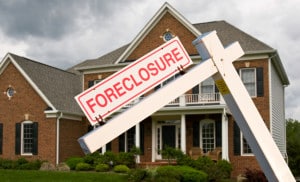Homebuyers who are struggling with their mortgages thanks to the struggling COVID economy have another two months of safety before the foreclosure ax begins to swing.
The Federal Housing Administration announced Monday that it is extending the foreclosure and eviction moratorium on single family, FHA-insured mortgages through Feb. 28, 2021. The FHA is also extending the deadline for single family borrowers with FHA-insured mortgages to request an initial COVID-19 forbearance from their mortgage servicer by the same amount. Those requests can lead to the servicer to deferring or reducing their mortgage payments for up to six months, which can then be extended for an additional six months beyond that.
Under the moratorium, servicers of FHA loans cannot initiate or proceed with a foreclosure or a foreclosure-related eviction, except for loans secured by legally vacant and abandoned properties. The intent, federal officials say, is to prevent pushing people into homeless shelters or crowded shared living situations where they face a higher risk of contracting or spreading COVID-19. The FHA says it still encourages borrowers with FHA-insured mortgages who can make their mortgage payments to continue to do so.
“Throughout this global pandemic, the Trump Administration has taken unprecedented steps to assist FHA-insured borrowers who are impacted by COVID-19,” HUD Secretary Ben Carson said in a statement. “Today’s foreclosure moratorium and forbearance extensions for single family homeowners ensure American homeowners continue to have the critical relief and support they need to get back to financial stability.”
Monday marks the fourth such extension of the moratorium, first put in place at the start of the pandemic. Fannie Mae and Freddie Mac have their own moratoria in place through Dec. 31, but as yet have not announced extensions.
While 2.7 million homeowners are in forbearance plans according to the latest estimates by the Mortgage Bankers Association, only 3.25 percent of GSE-backed mortgages are, compared to 7.79 percent of Ginnie Mae loans, a category that includes FHA and VA loans.
“The share of loans in forbearance has stayed fairly level since early November, often with small decreases in the GSE loan share and increases for Ginnie Mae loans. That was the case last week. Additionally, forbearance requests from Ginnie Mae borrowers reached the highest level since the week ending June 14,” MBA Senior Vice President and Chief Economist Mike Fratantoni said in a statement Monday. “Additional restrictions on businesses and rising COVID-19 cases are causing a renewed increase in layoffs and other signs of slowing economic activity. These troubling trends will likely result in more homeowners seeking relief.”
At the same time, many observes are sanguine about the mortgage market’s prospects should many homeowners in forbearance plans fall into foreclosure. New data released by CoreLogic earlier this month shows that the average Massachusetts homeowner gained $31,000 in equity in the third quarter on a year-over-year basis thanks to big run-ups in home value. This puts them in a stronger position to be able to sell their property if they are ultimately unable to keep up with their payments.
In addition to its moratorium, the FHA also extended multiple temporary provisions for lenders and servicers to allow them to continue doing FHA business despite social distancing requirements:
- The timeframe for providing an insurance endorsement on single family mortgages in forbearance through March 31, 2021.
- Temporary re-verification of employment guidance and exterior-only appraisal inspection option through Feb. 28, 2021.
- Temporary provisions for verification of self-employment, rental income, and 203(k) Rehabilitation Mortgage escrow accounts through February 28, 2021.




 |
| 


